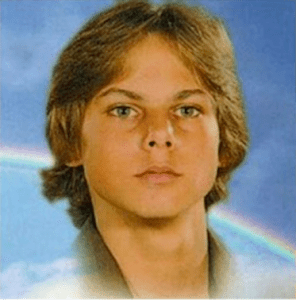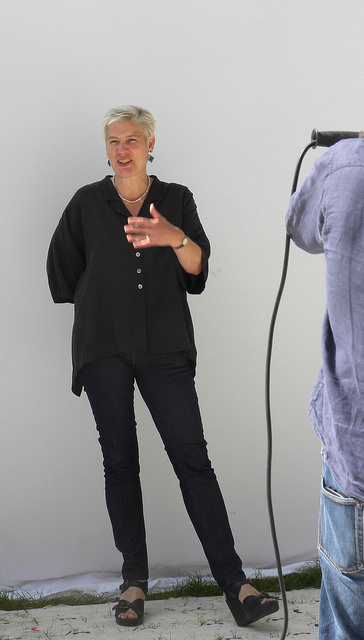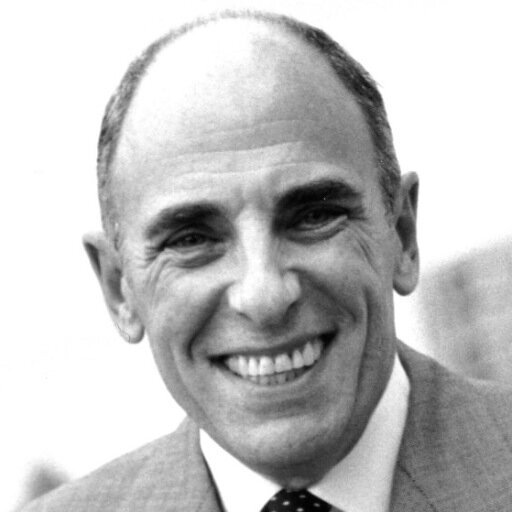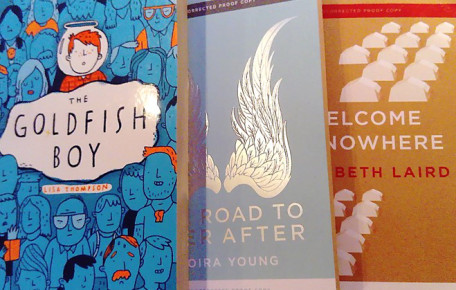 The Kurosawa Odyssey
The Kurosawa Odyssey
Year: 1975
Studio: Daiei Film, Mosfilm
Screenwriter: Akira Kurosawa, Yuri Nagibin, based on the book by Vladimir Arsenyev
Cast: Maxim Munzuk, Yury Solomin
Cinematographer: Asakazu Nakai, Yuro Gantman, Fyodor Dobronravov
Music: Isaak Shvarts
What is the measure of a man?
It’s a question Kurosawa revisited often, most notably in “Ikiru” and “Red Beard” previously, and again the master returns to it. This film came out at the lowest point in his career, after the implosion of “Tora! Tora! Tora!,” the rumors of his mental instability, the bombing of the schizophrenic “Dodes’ka-den,” his attempted suicide and his inability to find funding for anything in Japan. And while the film was shot completely in Russia with an almost entirely new crew, it feels like a great Kurosawa movie – like the maestro had finally managed to overcome whatever darkness had surrounded him… and just got back to making great movies with great characters and great stories. And while the scope of “Dersu Uzala” is certainly epic, Kurosawa never forgets that awe is never genuine without intimacy.
The true-ish story of Dersu Uzala (played here by Maxim Munzuk) is one that he had been trying to make for decades, and the writing posits a tremendous understanding of this very fascinating enigma. He’s a man who lives simply in the woods, hunting and roaming from place to place, never settled and never wanting more than the basics. He is, for all intents and purposes, a hermit. And yet within Dersu’s soul is a kindness and engagement one would never expect. Every person he encounters (which, obviously, are very few), he treats with dignity and openness, wanting to share his lifestyle and ways with anyone who will listen. Aside from the whole living in the woods thing, does this guy sound at all familiar to you?
 There is a slight frame story of a military captain named Arseniev (Yury Solomin) searching for the unmarked grave of Dersu. After that, we are flashed back several years to 1902 and the origin story of how Arseniev met Dersu – all with the backdrop of sweeping, epic shots of the Shkotovo forests shot in astounding 70 mm. Though in many ways this film represents Kurosawa going back to the basics, one thing has changed: In his older films like “Rashomon” he shot up through the trees into the sky. Now he shoots down into the trees toward the earth. Attach whatever symbolism you like to that observation.
There is a slight frame story of a military captain named Arseniev (Yury Solomin) searching for the unmarked grave of Dersu. After that, we are flashed back several years to 1902 and the origin story of how Arseniev met Dersu – all with the backdrop of sweeping, epic shots of the Shkotovo forests shot in astounding 70 mm. Though in many ways this film represents Kurosawa going back to the basics, one thing has changed: In his older films like “Rashomon” he shot up through the trees into the sky. Now he shoots down into the trees toward the earth. Attach whatever symbolism you like to that observation.
The story is split down the middle, with the first half focusing on the first encounter of Arseniev and Dersu and the forming of their friendship. The second half is when they are reunited years later, when Dersu is losing his vision and becoming incapable of living the life he wants. Critical reaction when the film came out was positive (the movie won the Oscar for Best Foreign Language Film), but critics mostly said that the first half was incredible, while the second sagged. I feel like the opposite is true.
When Dersu first meets Arseniev and his men, all of the expected things take place. Arseniev is a cipher, dreary except in his relationship with Dersu (shades of “The Great Gatsby” and “Sophie’s Choice” abound, with their bland narrator way less interesting than the title character) The men mock him for his smell, his way of life, his seemingly silly insights into the forest…etc. Kurosawa falls back on one of his most unfortunate clams – having the group of soldiers laugh so obviously at everything Dersu does. In the most clichéd scene in the film, the men are in a shooting competition to prove their manhood, and Dersu unsurprisingly blows them all out of the water by not only hitting the bottle they are swinging for target practice, but the string attached to the bottle. Would Kurosawa and his co-screenwriter Yuri Nagibin have been more successful if they had allowed Dersu to just seem nuts until he saves Arseniev’s life? I think so.
The movie perks up incredibly during that sequence, where Dersu and Arseniev are unable to head back to camp because they are surrounded in the wilderness by thin ice. Kurosawa goes to pains to show that these are real actors who are actually standing on real ice that is cracking in places, upping the stakes even further. What follows is a dizzying, wonderful sequence, one of the best in Kurosawa’s oeuvre, where the men start slicing straw down to build a make-shift hut that will save them from freezing to death.
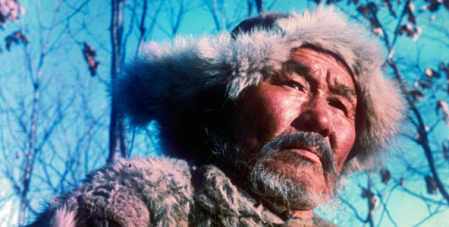 The second half of the movie is much more bittersweet. Time passes, the two old friends reunite and there is another crackerjack suspense scene, this time involving Dersu in a flooding river (also shot very obviously without stunt men in a real flooding river). But the real heart of the second half is a quiet scene where Dersu finally admits to himself (and Arseniev) that he cannot see. It’s heartbreaking, and watching Dersu attempt to change his way of living to become acclimated to his macular degeneration by joining Arseniev prove to be some of the saddest passages in all of the master’s work.
The second half of the movie is much more bittersweet. Time passes, the two old friends reunite and there is another crackerjack suspense scene, this time involving Dersu in a flooding river (also shot very obviously without stunt men in a real flooding river). But the real heart of the second half is a quiet scene where Dersu finally admits to himself (and Arseniev) that he cannot see. It’s heartbreaking, and watching Dersu attempt to change his way of living to become acclimated to his macular degeneration by joining Arseniev prove to be some of the saddest passages in all of the master’s work.
Of course, one cannot mention the movie without mentioning the look. While Kurosawa’s use of color in “Dodes’ka-den” was disastrous, here it is vivid and deep. When Arseniev first visits the woods, Kurosawa blasts them in a deep red, almost like a horror film, and as Dersu’s point of view becomes more pronounced the light becomes more natural. The film was shot on 70 mm, and it’s one of those movies that truly needs to be seen on the biggest screen possible. It’s worth the wait. Other “epic” films like “Gone With the Wind” and “Lawrence of Arabia” are great on the big screen but hold up incredibly well on the small screen too. I feel like “Dersu Uzala” works as well as it does because its scope allows you to forgive the many storytelling flaws of the first half and the blandness of Arseniev. I would probably be less forgiving if I were watching it on an iPad.
And seeing it on a smaller screen robs the movie of its most interesting vision: Dersu’s face. Maxim Munzuk gives a great performance, but Kurosawa seems obsessed with his face and look – lingering shots on him and his reactions to those around him. It’s one of those faces which is not handsome, but is impossible to look away from or forget. Long after the memories of the forests and the river and even the ice fade, you’ll remember Dersu, and smile.
Notes:
-The film also reminded me of the works of Werner Herzog, specifically his one-two punch of “Aguirre: Wrath of God” and “Fitzcarraldo.” You get the same epic views of vistas that you can’t quite believe were actually captured on film, and there’s that inherent sense of danger as you see the actors encountering life-threatening things. But while Herzog’s masterpieces lacked humanity, Kurosawa has it here in spades.
-The film is only available on a pretty shitty Kino DVD, and there’s no sign of a Criterion release. This is a shame, since the movie needs some restoration and watching the Kino version at home won’t fill you with the sense of wonder you need to fully engage. Take my earlier advice and wait until you can see it in 70 mm at a revival house. Or call Criterion and start insisting that they get their act together and get the rights to the movie.
Advertisements Share this:

